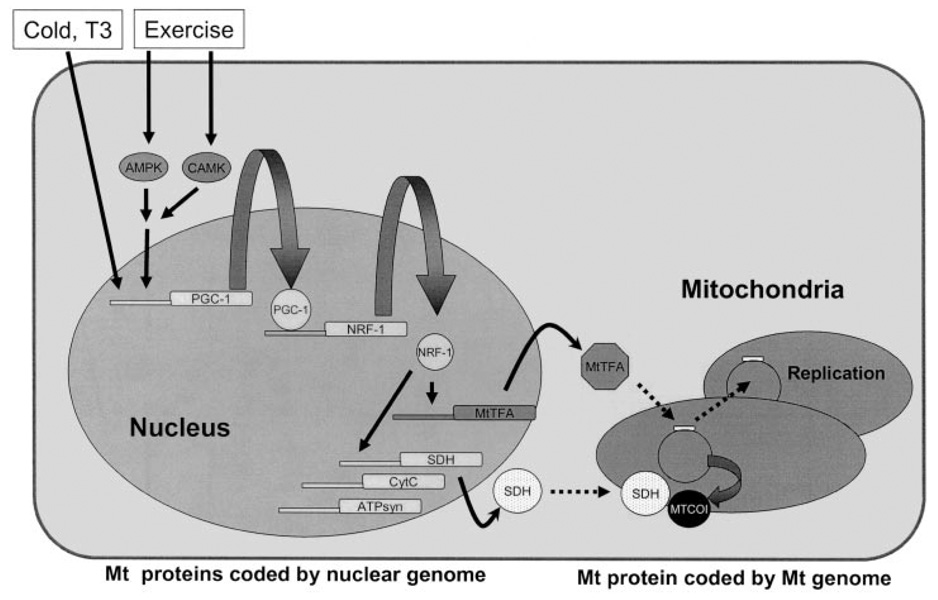FIG. 3.
The molecular mechanism of mitochondrial (Mt) biogenesis. Mitochondria have their own genome, which encodes 13 proteins, 2 rRNAs, and 22 tRNAs. It is also known that most of the mitochondrial proteins are encoded by the nuclear genome and translated proteins are transported into mitochondria. Extracellular stimuli induce mitochondrial biogenesis through PGC-1 in brown fat and skeletal muscle. Increased PGC-1 protein expression leads to increases in the expression of its target genes, including NRF-1. NRF-1 is a transcription factor stimulating many nuclear-encoded mitochondrial genes such as OXPHOS genes and mtTFA, a key transcriptional factor for the mitochondrial genome. mtTFA can bind to the D-loop of the mitochondrial genome and increase transcription of mitochondrial genes and replication of mitochondrial DNA. ATPsyn, ATP synthase; CytC, cytochrome C; MTCOI, mitochondrial cytochrome c oxidase subunit 1.

